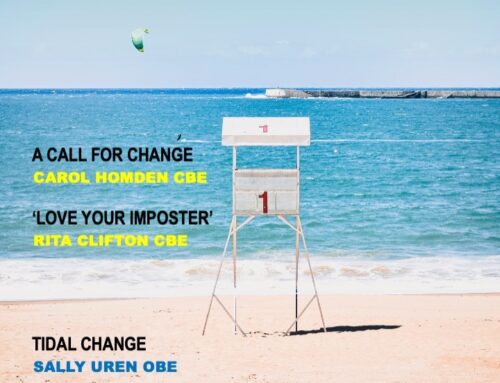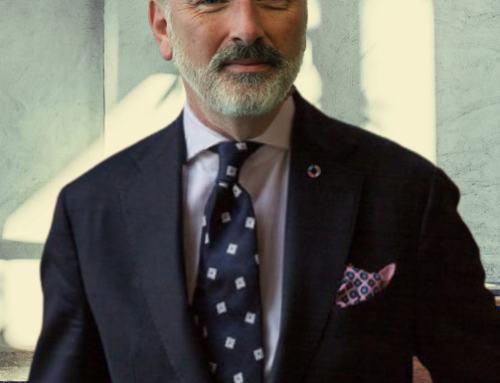Then, Now, How:
Lessons of History
 Public opinion suggests that the COVID-19-pandemic has battered the world in an intensity unparalleled in modern times. Often forgotten in the annals of history: a viral outbreak of this scale has already happened once before. The 1918 influenza, also known as the “Spanish Flu”, was one of the severest and deadliest pandemics in human history – and has important implications for modern-day society.
Public opinion suggests that the COVID-19-pandemic has battered the world in an intensity unparalleled in modern times. Often forgotten in the annals of history: a viral outbreak of this scale has already happened once before. The 1918 influenza, also known as the “Spanish Flu”, was one of the severest and deadliest pandemics in human history – and has important implications for modern-day society.
Despite its severe toll on the global economy, the years of the devastating pandemic were followed by a time of wealth, luxury, and innovation. A new, exuberant era also known as the “Roaring Twenties”. Can the lessons learned from the Spanish Flu and its economic recovery echo in our own twenties, a century later?
The world is in shock. Everything feels as if we’ve walked into an old recurring dream – a novel, global virus that keeps us contained in our homes, disrupts our daily routine and forces us to socially distance from our friends and family.
COVID-19 has become our new reality and is already reshaping our relationship to government, the outside world, even each other. We can’t go back to normal – but history has taught us that we can choose to make the best out of this situation to build a better future. At the present time we can observe an increased level of collaboration, more advanced and flexible use of technology, less individualism, a shift in consumer habits, and a revived appreciation of solidarity. While some of these behavioural changes may be temporary, many may be more permanent, opening the door to social and economic progress.
Leadership drives transformation
The battle against COVID-19 is one that places extraordinary demands on leaders in business and beyond. Regulatory barriers to working from home have fallen and traditional leadership styles have become outdated overnight. Since it will be near impossible to put that genie back in the bottle, executives must actively embrace digital change by uniting digital transformation with the company’s greater, long-term goals.
Beyond that, it is crucial for leaders to plan and prepare for the “new normal”, i.e. the post-viral era that emerges after the crisis. What will the aftermath of the global COVID-19 pandemic mean for businesses? What immediate actions can leaders take now and in the coming weeks?
This crisis will undoubtedly pass. But your company’s position during, immediately post, and in the long term, is determined by the actions that you take now.
To support you in this time of great uncertainty, I want to provide you with a strategic framework for responding with structure yet flexibility to the challenges ahead of us. By mapping your immediate, short- and long-term strategies across three horizons, you will be able to maximize business continuity while identifying disruptive and incremental changes in the transition.

Sometimes, it may be hard for leaders to know where to begin. Your first actions should therefore focus on resolving the immediate challenges that COVID-19 presents – internally to keep performing, and externally to keep your business up and running.
Recommendations for immediate action include:
- Focus on determining the key areas of your business that can be easily and quickly pivoted to be digitally delivered/ enabled.
- Communicate clearly and with compassion and adapt to new ways of working with employees and key stakeholders.
- Be ready to go with alternative ways of doing things and adapt your marketing strategy to current changes of the society.
Returning to effective operation through pace and scale, businesses should clearly define where they want to be when they enter the “new normal”. At this stage it is not important to predict the future, but to be well prepared for any unexpected challenges. To emerge from this crisis in a position of strength, leaders should:
- Have an agile, flexible organization with fast response times to changing customer needs.
- Switch their mindset to customer centricity as it sets the foundation for all other digital transformation decisions.
- Be prepared to offer new value and purpose to customers, adapting products and services to deliver the most efficient and innovative solutions.
Getting from the adapt-and-improve phase to a life beyond the crisis, businesses are well advised to establish a “return-to-new-normal-plan”. This includes all transition activities and ideas required to keep delivering after the virus passes, such as:
- Challenging the status quo as often as possible.
- Leaning into digital ways of working and connecting with customers, knowing that this will likely have lasting impact.
- Reassessing your business focus by tracking all trends and outlooks around human behaviour.
Pitfalls and Impediments
The COVID-19 crisis reveals many delayed and missed opportunities for digitalization in the past. Certainly, the virus has forced many time-honored bastions of traditional business to adapt faster and go virtual, but there’s also the threat of organizations returning to their old ‘analogue’ habits as soon as this crisis is over – not realizing that they run the risk of being disrupted and replaced.
Change is hard and one of the common pitfalls in digital transformation is to base technology decisions on the needs of the organization instead of the customer. When done properly, digital transformation should be driven by the goal of making clients’ lives easier – but without patronizing them.
Before digital transformation can truly begin, we need to establish an “error culture” that moves away from seeking the perfect solution.
Particularly in Germany, we need to overcome our lack of imagination and drive new ideas that provide unprecedented value to customers – even at the risk of failing.
What’s next?
Perhaps the only certainty is that any attempt at a definitive forecast will fail.
However, history has taught us that the battle against COVID-19 is one that leaders need to win if we are to find an economically and socially viable path to the “new normal”. Brands that adapt their strategies, act quickly and understand that there is no possibility of moving ahead as usual will be the first movers in a new society with unique trends and behavior patterns.
So, if you get moving now, we can shape what will be our own “Roaring Twenties” together, instead of being overwhelmed by the uncertainty of what the future might hold.
Christian Jumpertz, MBA
Batten & Company GmbH
Duesseldorf
Germany
LinkedIn
https://www.batten-company.com/en

Then, Now, How:
Lessons of History
 Public opinion suggests that the COVID-19-pandemic has battered the world in an intensity unparalleled in modern times. Often forgotten in the annals of history: a viral outbreak of this scale has already happened once before. The 1918 influenza, also known as the “Spanish Flu”, was one of the severest and deadliest pandemics in human history – and has important implications for modern-day society.
Public opinion suggests that the COVID-19-pandemic has battered the world in an intensity unparalleled in modern times. Often forgotten in the annals of history: a viral outbreak of this scale has already happened once before. The 1918 influenza, also known as the “Spanish Flu”, was one of the severest and deadliest pandemics in human history – and has important implications for modern-day society.
Despite its severe toll on the global economy, the years of the devastating pandemic were followed by a time of wealth, luxury, and innovation. A new, exuberant era also known as the “Roaring Twenties”. Can the lessons learned from the Spanish Flu and its economic recovery echo in our own twenties, a century later?
The world is in shock. Everything feels as if we’ve walked into an old recurring dream – a novel, global virus that keeps us contained in our homes, disrupts our daily routine and forces us to socially distance from our friends and family.
COVID-19 has become our new reality and is already reshaping our relationship to government, the outside world, even each other. We can’t go back to normal – but history has taught us that we can choose to make the best out of this situation to build a better future. At the present time we can observe an increased level of collaboration, more advanced and flexible use of technology, less individualism, a shift in consumer habits, and a revived appreciation of solidarity. While some of these behavioural changes may be temporary, many may be more permanent, opening the door to social and economic progress.
Leadership drives transformation
The battle against COVID-19 is one that places extraordinary demands on leaders in business and beyond. Regulatory barriers to working from home have fallen and traditional leadership styles have become outdated overnight. Since it will be near impossible to put that genie back in the bottle, executives must actively embrace digital change by uniting digital transformation with the company’s greater, long-term goals.
Beyond that, it is crucial for leaders to plan and prepare for the “new normal”, i.e. the post-viral era that emerges after the crisis. What will the aftermath of the global COVID-19 pandemic mean for businesses? What immediate actions can leaders take now and in the coming weeks?
This crisis will undoubtedly pass. But your company’s position during, immediately post, and in the long term, is determined by the actions that you take now.
To support you in this time of great uncertainty, I want to provide you with a strategic framework for responding with structure yet flexibility to the challenges ahead of us. By mapping your immediate, short- and long-term strategies across three horizons, you will be able to maximize business continuity while identifying disruptive and incremental changes in the transition.

Sometimes, it may be hard for leaders to know where to begin. Your first actions should therefore focus on resolving the immediate challenges that COVID-19 presents – internally to keep performing, and externally to keep your business up and running.
Recommendations for immediate action include:
- Focus on determining the key areas of your business that can be easily and quickly pivoted to be digitally delivered/ enabled.
- Communicate clearly and with compassion and adapt to new ways of working with employees and key stakeholders.
- Be ready to go with alternative ways of doing things and adapt your marketing strategy to current changes of the society.
Returning to effective operation through pace and scale, businesses should clearly define where they want to be when they enter the “new normal”. At this stage it is not important to predict the future, but to be well prepared for any unexpected challenges. To emerge from this crisis in a position of strength, leaders should:
- Have an agile, flexible organization with fast response times to changing customer needs.
- Switch their mindset to customer centricity as it sets the foundation for all other digital transformation decisions.
- Be prepared to offer new value and purpose to customers, adapting products and services to deliver the most efficient and innovative solutions.
Getting from the adapt-and-improve phase to a life beyond the crisis, businesses are well advised to establish a “return-to-new-normal-plan”. This includes all transition activities and ideas required to keep delivering after the virus passes, such as:
- Challenging the status quo as often as possible.
- Leaning into digital ways of working and connecting with customers, knowing that this will likely have lasting impact.
- Reassessing your business focus by tracking all trends and outlooks around human behaviour.
Pitfalls and Impediments
The COVID-19 crisis reveals many delayed and missed opportunities for digitalization in the past. Certainly, the virus has forced many time-honored bastions of traditional business to adapt faster and go virtual, but there’s also the threat of organizations returning to their old ‘analogue’ habits as soon as this crisis is over – not realizing that they run the risk of being disrupted and replaced.
Change is hard and one of the common pitfalls in digital transformation is to base technology decisions on the needs of the organization instead of the customer. When done properly, digital transformation should be driven by the goal of making clients’ lives easier – but without patronizing them.
Before digital transformation can truly begin, we need to establish an “error culture” that moves away from seeking the perfect solution.
Particularly in Germany, we need to overcome our lack of imagination and drive new ideas that provide unprecedented value to customers – even at the risk of failing.
What’s next?
Perhaps the only certainty is that any attempt at a definitive forecast will fail.
However, history has taught us that the battle against COVID-19 is one that leaders need to win if we are to find an economically and socially viable path to the “new normal”. Brands that adapt their strategies, act quickly and understand that there is no possibility of moving ahead as usual will be the first movers in a new society with unique trends and behavior patterns.
So, if you get moving now, we can shape what will be our own “Roaring Twenties” together, instead of being overwhelmed by the uncertainty of what the future might hold.
Christian Jumpertz, MBA
Batten & Company GmbH
Duesseldorf
Germany
LinkedIn
https://www.batten-company.com/en




